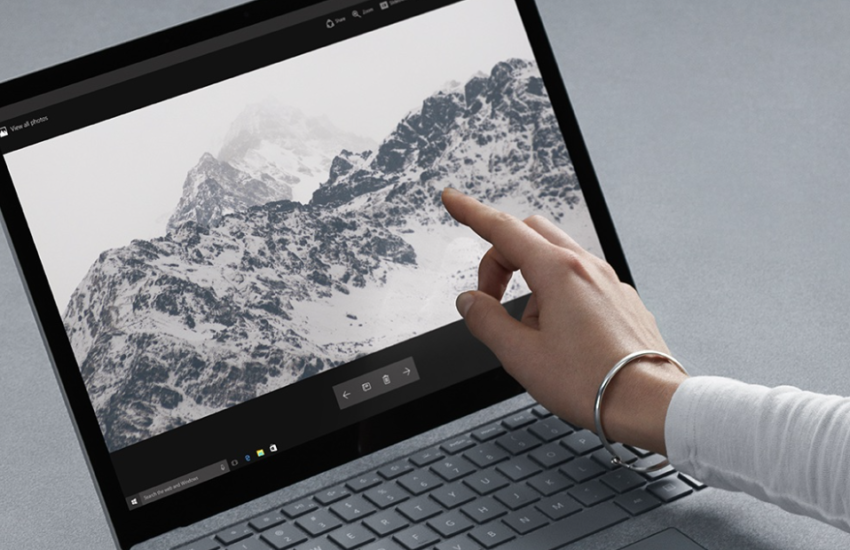Touchscreen technology on laptops has become an increasingly influential interface that effectively connects human interaction with digital computing. The convergence of touch-sensitive displays with conventional laptop capabilities grants users an intuitive and immersive means to interact with content, fulfil objectives, and navigate through the digital realm. Laptop touch screens have emerged as a multifaceted instrument, augmenting efficiency, fostering ingenuity, and serving as a conduit for seamless and captivating engagements across a broad spectrum of applications.
Let’s look at 7 incredible perks of laptop touch screen technology by diving deep in this blog.
1. Intuitive Navigation
Touch gestures play a pivotal role in facilitating laptop touch screen navigation. These actions encompass tapping, swiping, pinching, and spreading one’s fingers to effect zooming in or out, dragging, and rotating. These gestures emulate real-life interactions and enhance the user experience of navigation, particularly for individuals who are accustomed to touch-based devices. Multitouch technology facilitates the capacitive screen to ascertain and handle multiple touch points concurrently. This functionality facilitates sophisticated gestures and interactions, encompassing actions such as employing the use of two fingers to seamlessly navigate, rotate, or manipulate elements presented on the display.
2. Enhanced Productivity
Touch screens offer numerous benefits in tasks involving drawing, sketching, graphic design, and various other creative pursuits. There is no denying that touch interfaces and stylus input offer a more user-friendly and straightforward means of engaging with content, particularly when employed within software applications programmed to accommodate such functionalities. Laptop touch screens are a highly favourable medium for the purpose of capturing handwritten notes, offering notable advantages in terms of enhanced efficiency and a more authentic user experience in contrast to the act of typing. Numerous laptops with touch input capabilities are equipped with stylus support, thus facilitating the convenient annotation of notes directly on the screen.
3. Directly Manipulate Objects on The Screen
Similar to the manner in which one would manipulate a mouse, individuals have the capability to employ either their finger or a stylus to execute actions such as clicking and dragging objects across the screen. This function serves practical purposes in terms of file transfer, icon rearrangement, and content organisation. Objects such as images, windows, and elements contained within applications can be modified in terms of size and orientation through the employment of pinch-to-zoom actions and rotational movements.
In the context of presentations and collaborative activities, individuals possess the capability to employ either their finger or a stylus in order to annotate and emphasise visual content displayed on a screen. This approach is frequently utilised within academic environments and corporate gatherings.
4. Handwriting and Drawing
Handwriting recognition software is a common feature found in various laptop models, enabling the conversion of handwritten notes into digital text. This functionality facilitates the expression of ideas in a spontaneous manner, whereby one’s handwritten material is transformed into text that can be edited and searched. The use of stylus input is highly beneficial in the context of graphic design applications. One can utilise this software tool to generate intricate illustrations, logos, and various other graphic designs. The stylus’s ability to respond to pressure facilitates the creation of diverse line widths and shading influences.
5. Quick Access to Functions
Laptop touch screens frequently facilitate expedited access to functions by means of a diverse range of touch gestures and shortcuts. These characteristics are purposely devised to optimise the ease of use and effectiveness during the interaction with the device. Touch-enabled laptops are equipped with an Action Center that can be conveniently accessed by performing a swipe gesture from the right edge of the screen. The Action Center offers expedited accessibility to notifications, toggles for adjusting settings, and additional functionalities related to the system.
6. Interactive Presentations
Laptop touch screens facilitate interactive presentations through the direct engagement of presenters with the content using touch gestures and stylus input. This feature has the potential to enhance the dynamism, engagement, and informativeness of presentations for the audience. During the delivery of a presentation, the individual conducting it possesses the option to employ a stylus or their finger in order to add annotations and draw on the slides being utilised. This functionality can be advantageous for accentuating pivotal points, underscoring significant information, and incorporating visual elucidations.
7. Immersive Entertainment
Touch screens offer a heightened level of interactivity and tactile engagement in the consumption of multimedia materials, including videos, movies, and streaming services. The manipulation of touch gestures can be employed to govern playback, regulate volume, and traverse through content. Touch-enabled laptops can offer distinctive and unparalleled gaming experiences, particularly for games specifically designed to optimise touch controls. Touch screens are ideally suited for the engagement of individuals in leisure activities such as casual games, puzzles, simulation games, and interactive story-based adventures.
Key Takeaways
The integration of touch screens in laptops has considerably revolutionised the manner in which individuals engage with computers, providing a heightened level of intuitiveness, dynamism, and interactivity in the user experience. The integration of touch-enabled displays has significantly augmented the multifunctionality of laptops, effectively bridging the dichotomy between conventional computing processes and the physical interaction characteristic of mobile devices.

